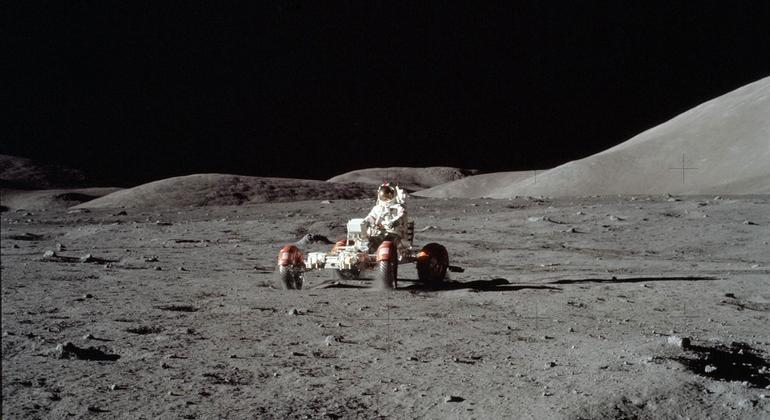Here’s the translation of your text into American English:
—
Telling time on the Moon has become a challenge that gains significance as lunar exploration advances and intensifies. The United Nations (UN) has taken the initiative to ensure that all activities on this natural satellite are conducted in an organized and peaceful manner, which has led to the establishment of a lunar time zone being at the center of international discussions.
While it might seem logical to adopt Coordinated Universal Time (UTC) as a reference, this solution brings numerous complications. On Earth, the 24 time zones are designed based on the planet’s rotation and its longitude. In contrast, a lunar day lasts approximately 29.5 Earth days, which means that some regions of the Moon may experience continuous sunlight for periods of up to 14 days. There are also mountains, known as “peaks of eternal light,” where the Sun never sets.
Another important issue is the time difference between Earth and the Moon. Two perfectly synchronized clocks, one on each celestial body, would show a difference of about 56 microseconds after just one day on Earth. Although this is a small variation, it could be critical for space navigation.
To move towards an operable lunar time zone, it is essential for nations interested in lunar exploration to come to an agreement on a common time system that can be reliably used. In this context, the UN Office for Outer Space Affairs (UNOOSA) is leading efforts to standardize lunar timing. In 2024, the International Committee on Global Navigation Satellite Systems (ICG) will form a working group dedicated to this task.
This initiative aims to ensure that activities on the Moon, whether scientific, commercial, or otherwise, are carried out safely, peacefully, and sustainably. In June 2024, the UN will convene the first Conference on Sustainable Lunar Activities, an event where representatives from space agencies and experts will gather to discuss the need for clear and collaborative governance.
Additionally, a new Action Team for Lunar Activities Consultation (ATLAC) will play a key role in this process, promoting dialogue among nations and making recommendations on coordinating activities on the Moon. With this approach, humanity is entering a new era of lunar exploration, where international cooperation could redefine our relationship with the satellite that accompanies us. By working alongside UNOOSA, member states are committed to preserving the Moon as a space for global collaboration, grounded in the principle that activities in space should benefit all of humanity.
—
via: MiMub in Spanish
